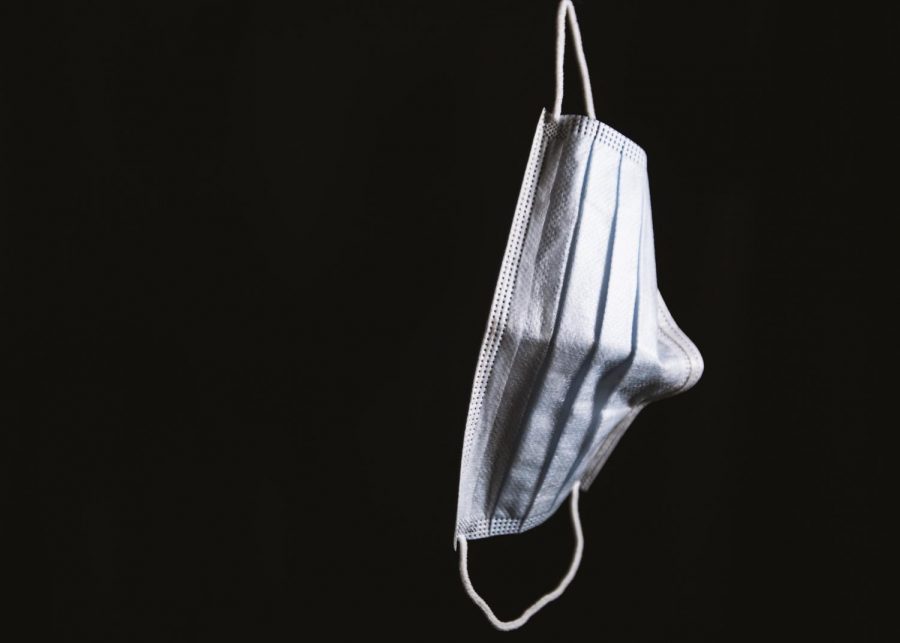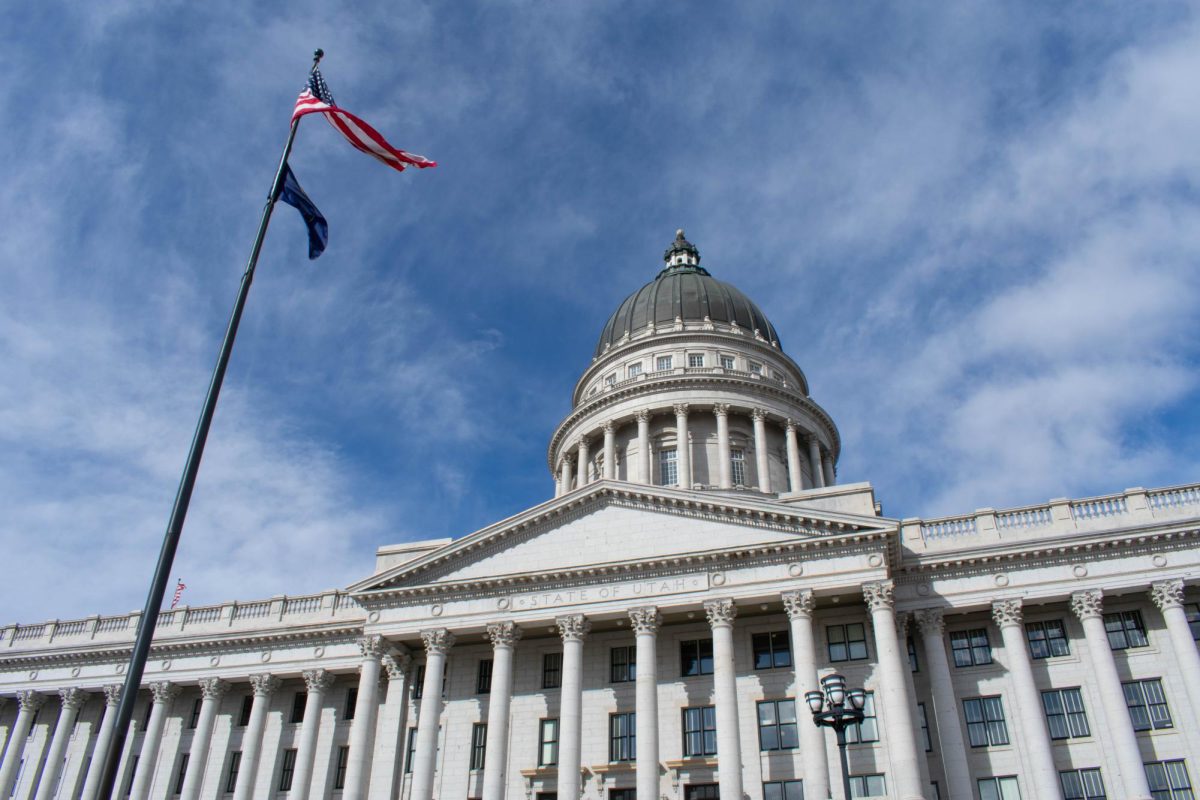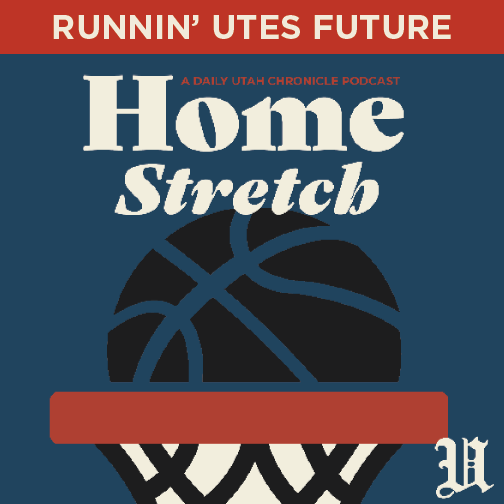Coronavirus Outbreak Fuels Xenophobia
“Some individuals have taken to social media to make memes about the coronavirus while others have documented instances of discrimination in public spaces and taken a stand against xenophobia.” (Photo by Justin Prather | Daily Utah Chronicle)
February 19, 2020
Since the news of the 2019 novel coronavirus (COVID-19) which originated in Wuhan, China broke, there have been cases of racial stereotyping linked to the virus in the United States. As of Feb. 8, according to a live map from John Hopkins Whiting School of Engineering, there’s been 40,787 documented cases of coronavirus around the world and 40,196 in Mainland China. Only 13 cases have been reported in the United States.
While walking through the aisles of the store Justice, located at Fashion Place Mall in Murray, with her daughter, Kimberly Jew noticed two women staring at her. Jew is a professor of Asian American studies at the University of Utah and a fourth-generation Chinese American — she watched as one of the women moved away in fear, and recalled feeling like she was in a horror movie.
“She looked at me and then there was the observation and then perception and then the recognition,” said Jew. “I could see that happening within a few seconds.”
At first, she tried to dismiss it and attempted to focus on her daughter instead. Then she noticed the two women called a little girl to leave the store.
“[They] were just standing there, outside the store, 10 feet away. Staring at us,” Jew said. “Just waiting for us to come out of the store. So they had clearly left the store and were waiting for us to leave.”
Jew’s encounter can be considered a case of racial stereotyping, which can be linked to the spread and extensive media coverage of the coronavirus.
According to an article written by Chris Buckley and Steven Lee Myers for The New York Times, the virus became known by whistleblower Dr. Li Wenliang, who reported the virus online. Dr. Wenliang was censored by the government. The Wuhan Central Hospital where Dr. Wenliang worked then announced his death in the early morning of Feb. 7.
At the University of California Berkeley, the University Health Services uploaded a now-deleted statement on Instagram about the common reactions students might find because of media coverage of the virus. Listed among them: xenophobia.
“When is xenophobia ever a ‘normal reaction’?” tweeted Adrienne Shih, a UC Berkeley alum and editor for the Los Angeles Times. “This post is literally normalizing racism. It’s not okay,” Shih wrote in a follow-up tweet.
Since then, the University of California has released a statement apologizing for the misunderstanding.
Some individuals have taken to social media to make memes about the coronavirus while others have documented instances of discrimination in public spaces and taken a stand against xenophobia. These events have reminded some of the reactions to the SARS outbreak in 2003 and the Ebola virus in 2014.
“I think there is a racial undertone to a lot of the reactions to the virus,” Jew said. “Particularly in terms of a kind of racialization of disease. Thinking that somehow a virus or a disease has an ethnicity or a particular ethnic or racial group is predisposed to have this condition.”
A “perpetual foreigner,” Jew explained, is a coined term used in Asian American studies to describe ethnic minorities who are seen as “other,” and never quite assimilated or integrated into the American consciousness.
The racial stereotyping happening around the world underscores the perpetual foreigner identity, she said.
Courrier Picard, a French newspaper, sparked controversy on Twitter when they released the headline “Alerte Jaune.” The hashtag #JeNeSuisPasUnVirus, which translates to “I am not a virus” was trending after growing frustration with the discrimination seen in France.
U senior Vicky Nguyen, a kinesiology major, said she’s not worried about the outbreak in the United States, but thinks it has played a role in racism.
“[Because of] me being Asian, I feel like a lot of people kind of give me weird looks now,” Nguyen said. “You know, like the vibe. Cause it’s in China.” Nguyen said she hasn’t felt that way on campus but has seen examples outside of school.
The U Department of Safety created a group focused on monitoring and tracking the potential risk of the virus to the campus community. The group is currently working with the Salt Lake County Health Department and the Utah Department of Health.
The Utah Department of Health reported on their page that no cases have been confirmed in Utah.
“While the origin of this particular outbreak can be traced back to China,” the statement on the UDOH website said, “it would be grossly inappropriate, not to mention medically ineffective, to ostracize anyone from our communities or exclude anyone from our places of public gathering based on their race, nationality or ethnicity.”
i.martinez@dailyutahchronicle.com
Editor’s note: Signs and symptoms of COVID-19 include fever, dry cough, tiredness, and shortness of breath. These symptoms are believed to occur between 2 and 14 days after a person is exposed to the disease. If you have these symptoms and have recently come into contact with a person who is known to have COVID-19, or if you have recently traveled to an area with community spread of the disease, you should call your doctor. Areas with community spread of COVID-19 are believed to include China, South Korea, Italy, Iran, and Seattle. If you do not have a doctor who you visit regularly, please call the Utah Coronavirus Information Line at 1-800-456-7707 or the University of Utah Health hotline at 801-587-0712. Do not go to a healthcare facility without first making arrangements to do so.











